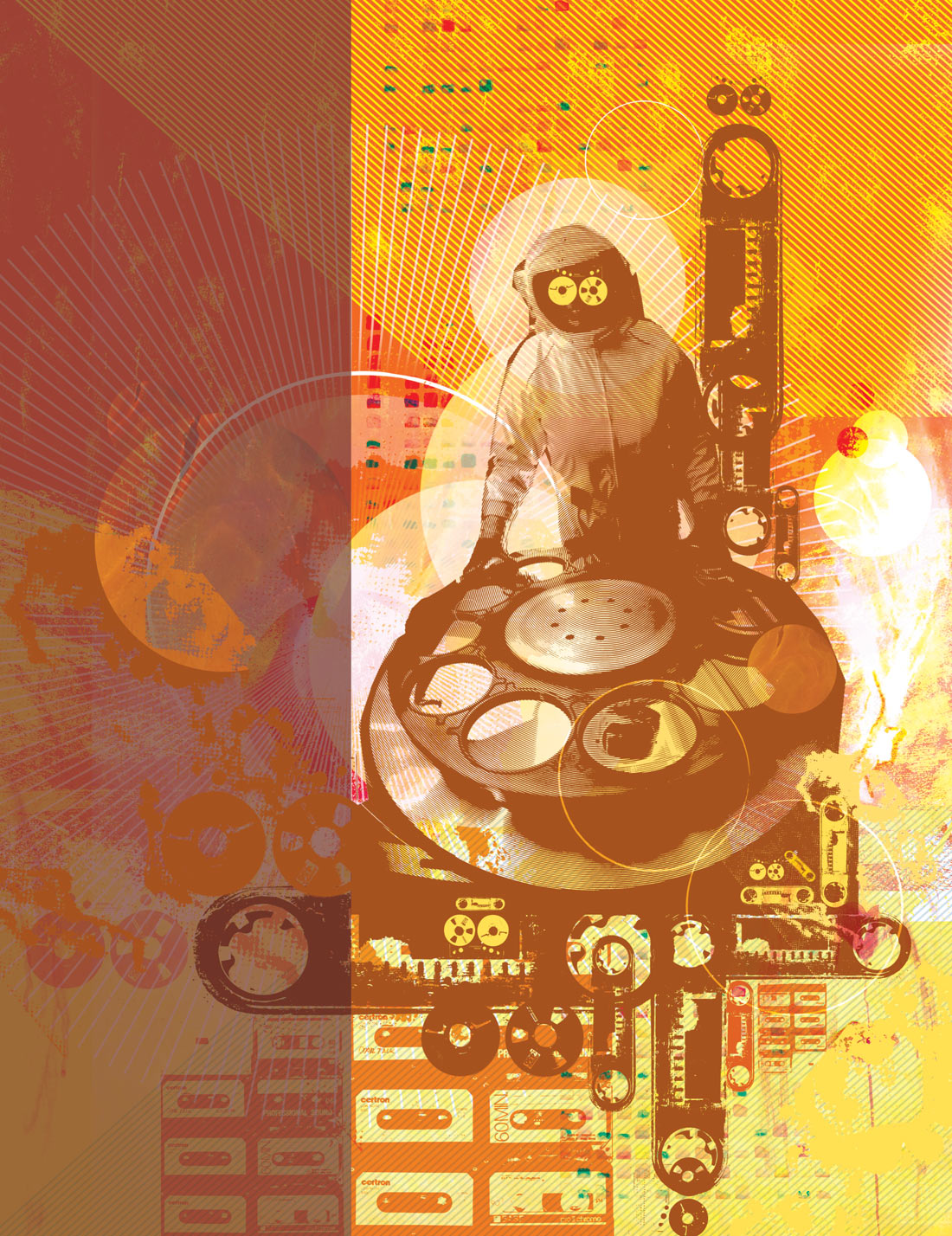Earlier this year, we at WMBR Radio discussed replacing our trusty Soundcraft Spirit 328 digital mixing console. After many years of regular use, it was starting to show its age. Plus, we decided our extended experiment with digital patching and routing wasn't successful, and we wanted to go back to an analog signal flow. Our parameters were set: we wanted a clean- sounding, new, analog console with at least sixteen channels; and we had around $4000 to spend.
We quickly found that we had few options. There were boards above and below our price point, but few close to it. The Soundcraft Ghost was a strong contender, but it was priced a bit high for us. The Toft ATB was another good option, but was quickly dismissed as it isn't yet available and is a total unknown. Arguably, the best bet in this range could be buying used and hiring a good tech, but we wanted a new console. Finally, we cast our eyes on a somewhat improbable board: the Mackie Onyx 2480. "Improbable" because the 2480 is a live sound board, not a recording console. It's a 24-channel, 8-buss console, with direct outs and a 4-band semi-parametric EQ on all 24 channels. Eight aux sends, eight stereo aux returns each with 4-band fixed EQ, a 10x2 matrix section, and four mute groups round out the board's main features. Also, each of the 24 input channels is equipped with a switch for selecting between line and mic inputs- both of which can remain physically connected-a required feature for us because of all the line-level sources that you find in a typical radio station.
Sound-wise, we quickly found this board to be a solid step up from our old Spirit 328. The low end from kick drums and basses was tighter and deeper, sometimes dramatically so. Transient response was much better, as we heard more detail and crispness from our usual set of Shure SM81 drum overheads than before. Imaging and high-end extension were both improved; dull mixes were much easier to avoid. In addition, characteristics of individual mics became easier to discern. Generally, the sound was clean and solid; our guess was that much of the improvement came from the Onyx mic preamps, which have been reviewed here before (Tape Op #45). As for EQ, we were split. Our old Spirit 328 has a 3-band EQ, with adjustable frequency and Q for each band, while the Mackie had a 4-band EQ with only the middle two bands having adjustable frequency. Some of us preferred the greater control of the old Spirit EQs, while some felt that the Mackie EQs sounded better and were more useful.
There was generally plenty of headroom, as we routinely ran a main output level indicated as +7 to +10 dBu on the LED meters (the next LED after +10 is marked "Clip" at +20 dBu). Individual channels usually had headroom to spare as well, although with certain sounds that were closer to purer tones (such as xylophones and some synthesizers), there was a tendency to distort well in advance of overloading. That, and our feeling that the mix buss wasn't quite up to the sonic quality of the preamps were our only complaints sound- wise, and they are minor. Overall, we were very happy with the sound; given the wide range of music we mix, a good clean board is exactly what we needed.
Physically, the console is big, at 4 ft wide, 2.5 ft deep, and 95 lbs. The size is put to good use: the layout is sensible, there's good use of color coding and labeling, and the board feels spacious. The face of the console is tilted towards the front (it doesn't lay flat on the table), and all connections are on the back of the unit. Routing options abound; even though most of our sessions are mixed live to 2-track stereo, with a maximum of sixteen channels used at once, the additional eight channels come in handy for effects returns. While the lack of dedicated tape inputs on each channel may seem to hinder utility in a more traditional recording situation, we've recorded standard multitrack studio sessions to an 8-channel Pro Tools setup with no problems. With some creativity, the board could accommodate a 16-track recorder fairly well, which is something we plan on adding once we upgrade our DAW. On the downside, the small buttons used in both the aux section and for the group assignments of each channel are difficult to read position-wise, as the height difference between positions is very small. Also, there is an internal fan used to dissipate heat that is relatively quiet but may be intrusive depending on your environment.
All told, we've found this Mackie to be a good value. Indeed, we were pleasantly surprised by the sound, and the street price of $4000 fits our budget perfectly. Overall, we found this board to be a quality offering that's suitable for both live sound and recording purposes, and we're quite happy with our choice. ($4299.99 MSRP; www.mackie.com)




_disp_horizontal_bw.jpg)